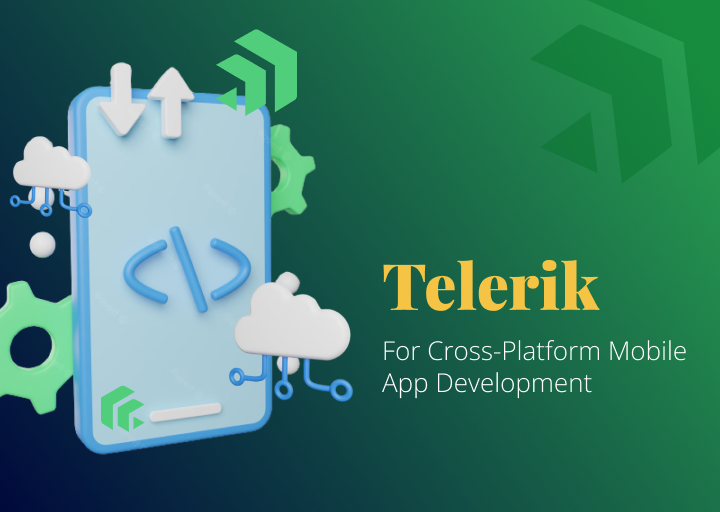Overview of Telerik
Telerik provides native options for developing cross-platform mobile apps for iOS, Android, and Windows. Its platform modernizes and accelerates the app development process, making each step more efficient. Here’s how to implement Telerik for your mobile project.
Steps for Implementing Telerik
Telerik offers a complete solution for building cross-platform native apps, supporting your organization’s entire mobile strategy. Here are the steps involved:
Step 1: Designing –
Create visually appealing mobile apps using Telerik controls. Choose from pre-designed screens in the library and connect them to live data for a fully functional app. Telerik’s design themes make your app intuitive and attractive.
Step 2: Easy Application Building –
Use JavaScript and CSS skills to create mobile apps. Clone an existing project or use pre-built templates for a quicker start.
Step 3: Simplified Connecting of Applications –
Connect your mobile app to your organization’s data with ease using built-in data connectors. Scale your app using cloud, private cloud, or on-premise services and ensure it works offline and synchronizes data efficiently.
Step 4: Refined Testing of Apps –
Test your app using Telerik controls and the Device Cloud, which allows you to run automated tests on over 300 mobile devices. Test and debug your iOS, Android, and Windows apps using built-in simulators or emulators and execute automated testing using JavaScript across multiple platforms.
Step 5: Simplistic Deployment of Apps –
Deploy and publish your mobile app on public or private app stores, including Windows, Apple, and Google Play. Push automatic application updates and live updates for approvals and manual updates.
Step 6: Secured Management of Apps –
Maintain secure access and control of your mobile app. Monitor who has access and remotely disable the app as needed.
Step 7: Trouble-free measurement of apps-
Use Telerik’s crash reports and performance bottlenecks to troubleshoot problems and gauge app analytics and user feedback.

Important Features of Telerik
1- Extensive set of features and controls – Telerik offers various components for needs like navigation, layout, editing, and interactivity. The ASP.NET controls claim to offer over 4000 features.
2- Custom editor’s support – Telerik RadGrid offers editable columns that allow users to replace the default editor with custom ones.
3- Outstanding performance and user experience – Telerik controls produce minimal and clean HTML and CSS, compress data transfer between browser and server, minimize memory usage, and have robust, leak-free code.
4- HTML5-Based Rendering – Many Telerik ASP.NET controls offer HTML5 and CSS3-based render mode, saving resources and improving performance.
5- Developer-Friendly Toolset – Telerik controls integrate seamlessly with your Visual Studio toolbox for quick drag-and-drop usage. They come with thousands of demos and help tutorials, providing dedicated support even when using the trial version.
6- Seamless UX Across Devices and Browsers – Telerik ASP.NET AJAX controls work well across major browsers like Microsoft Edge, Chrome, Firefox, Safari, and Opera.
New Features and Roadmap Further
Telerik continues to improve its app development tools and controls, with new value additions like improved UI, exporting capabilities, enhanced APIs, and material design themes for contemporary web projects. Its features make it stand out among leading cross-platform development tools and controls. Let’s see how it fares in the market in the coming times.
